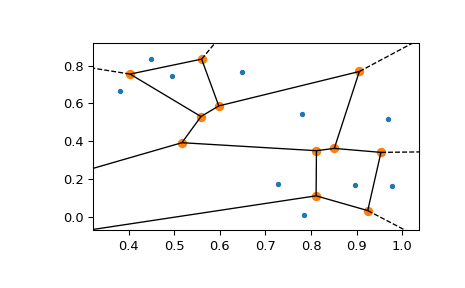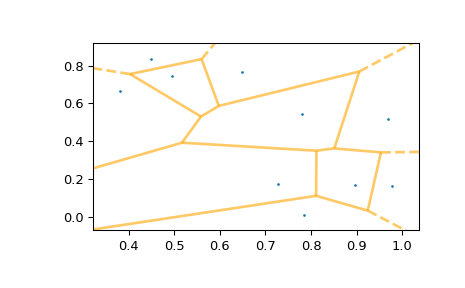scipy.spatial.
voronoi_plot_2d#
- scipy.spatial.voronoi_plot_2d(vor, ax=None, **kw)[source]#
Plot the given Voronoi diagram in 2-D
- Parameters:
- vorscipy.spatial.Voronoi instance
Diagram to plot
- axmatplotlib.axes.Axes instance, optional
Axes to plot on
- show_pointsbool, optional
Add the Voronoi points to the plot.
- show_verticesbool, optional
Add the Voronoi vertices to the plot.
- line_colorsstring, optional
Specifies the line color for polygon boundaries
- line_widthfloat, optional
Specifies the line width for polygon boundaries
- line_alphafloat, optional
Specifies the line alpha for polygon boundaries
- point_sizefloat, optional
Specifies the size of points
- Returns:
- figmatplotlib.figure.Figure instance
Figure for the plot
See also
Notes
Requires Matplotlib.
Examples
>>> import numpy as np >>> import matplotlib.pyplot as plt >>> from scipy.spatial import Voronoi, voronoi_plot_2d
Create a set of points for the example:
>>> rng = np.random.default_rng() >>> points = rng.random((10,2))
Generate the Voronoi diagram for the points:
>>> vor = Voronoi(points)
Use
voronoi_plot_2dto plot the diagram:>>> fig = voronoi_plot_2d(vor)
Use
voronoi_plot_2dto plot the diagram again, with some settings customized:>>> fig = voronoi_plot_2d(vor, show_vertices=False, line_colors='orange', ... line_width=2, line_alpha=0.6, point_size=2) >>> plt.show()

